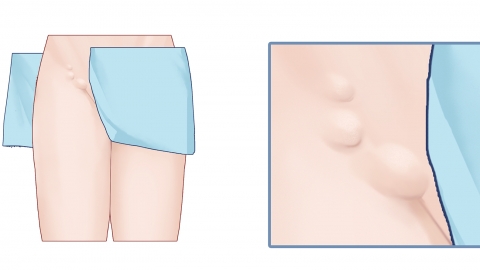What are the classifications and clinical symptoms of external abdominal hernias?
Abdominal wall hernias are generally classified into inguinal hernia, femoral hernia, umbilical hernia, incisional hernia, and epigastric hernia. Clinical symptoms typically include local swelling, pain, indigestion, intestinal obstruction, and systemic toxic manifestations. A detailed analysis is as follows:

I. Classification
1. Inguinal Hernia: The most common type, divided into indirect and direct hernias. An indirect hernia protrudes through the inguinal canal and may extend into the scrotum, whereas a direct hernia emerges from the direct hernia triangle and does not enter the scrotum. The swelling is more prominent when standing and can usually be reduced when lying down.
2. Femoral Hernia: More common in middle-aged and elderly women. The hernia protrudes through the femoral canal and appears as a hemispherical bulge at the oval fossa. Due to the narrow femoral canal, it is prone to incarceration and strangulation.
3. Umbilical Hernia: In infants, it is mostly due to incomplete closure of the umbilical ring; in adults, it is often associated with increased intra-abdominal pressure. A reducible swelling appears at the umbilicus, and adult umbilical hernias are susceptible to incarceration.
4. Incisional Hernia: Occurs at the site of a surgical incision, often related to wound infection, poor healing, or increased intra-abdominal pressure. It presents as a gradually enlarging mass at the incision site that decreases in size when lying down.
5. Epigastric Hernia: Occurs along the midline abdominal white line, commonly seen in the upper abdomen. It manifests as a subcutaneous mass along the midline of the abdomen, which may cause upper abdominal discomfort or pain.
II. Clinical Symptoms
1. Local Swelling: A mass appears in the inguinal region, at the umbilicus, or near a surgical scar when standing or straining, and usually disappears spontaneously when lying down.
2. Pain: Dull ache or pulling pain accompanies the protrusion of the mass. Pain intensifies during incarceration and may radiate to the lower abdomen or perineum.
3. Indigestion: When the herniated contents involve bowel loops, symptoms such as bloating and constipation may occur.
4. Intestinal Obstruction: After hernia incarceration, signs of intestinal obstruction—such as abdominal pain, vomiting, and cessation of defecation and flatus—may develop.
5. Systemic Toxic Symptoms: If the herniated tissue becomes strangulated and necrotic, systemic toxic manifestations such as fever, tachycardia, and hypotension may appear.
In daily life, patients should avoid strenuous exercise and heavy physical labor, maintain regular bowel movements, avoid chronic coughing, and obese individuals should manage their weight. Immediate medical attention is required if the hernia cannot be reduced or if pain worsens.




